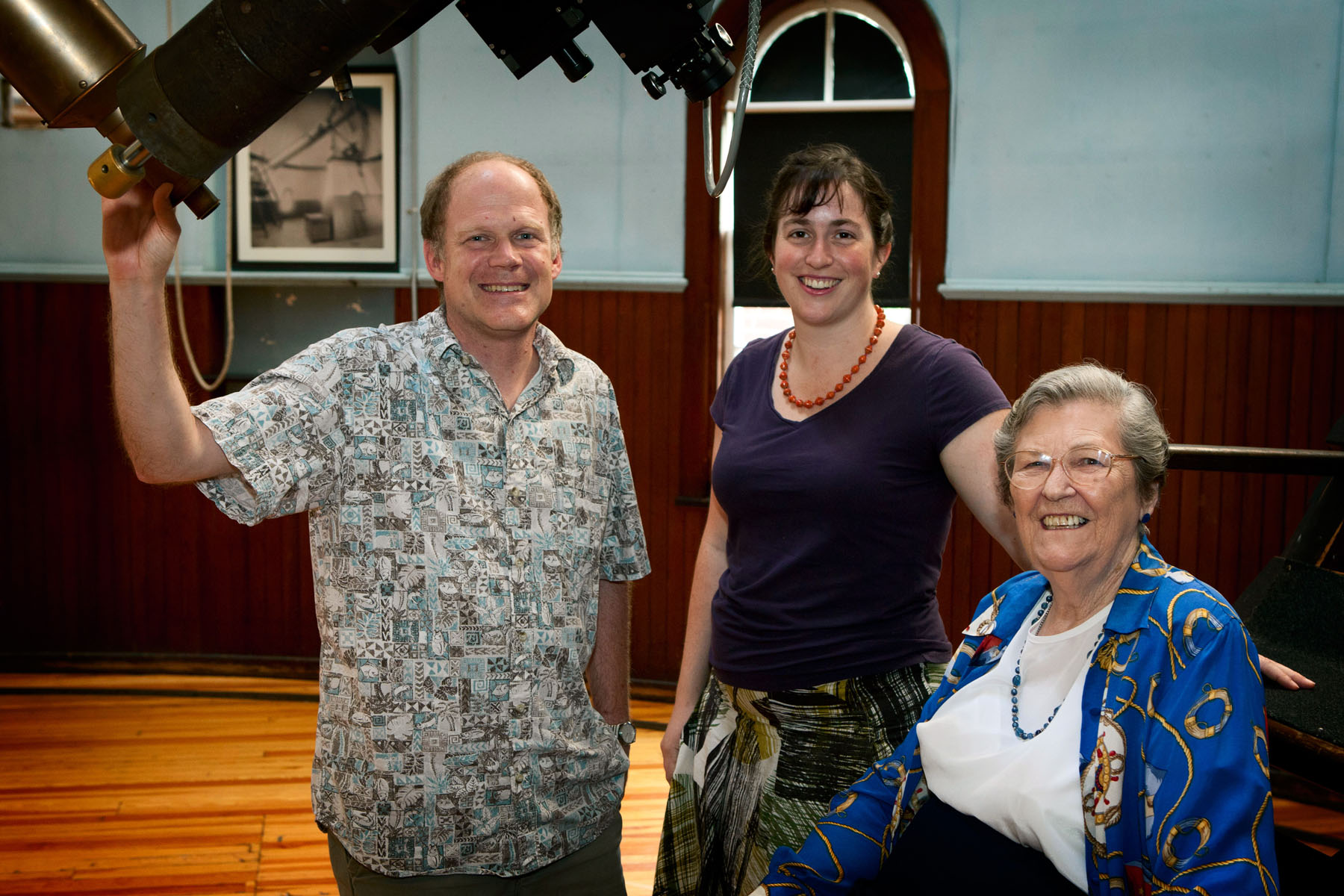July 20, 2011 — The first computers at the University of Virginia weren't inanimate objects made up of wires and circuitry. Rather, they were humans, usually female, who worked in the Department of Astronomy, measuring the distance between stars based upon images on 5-by-7-inch photographic plates, made overnight by astronomers working at the Leander McCormick Observatory.
One of these computers, Caroyl Gooch, who worked at the observatory from 1942 to 1946, is the subject of an award-winning paper by Geneviève de Messières, who recently earned a Ph.D. in astronomy from U.Va.'s Graduate School of Arts & Sciences.
Messières won first prize in the 15th Annual Griffith Observer Writing Contest, sponsored by Boeing, for her paper, "Interviewing a Computer," which details Gooch's experiences working at the observatory.
The human computers assisted astronomers by completing measurements during the day while astronomers rested, explained Richard Patterson, senior scientist in the College's Department of Astronomy. "Many of the computers were women who had an aptitude for math and some interest in science,” he said.
De Messières was unfamiliar with the role of computers until she met Gooch, who contacted the observatory last year during its 125th anniversary celebration.
Patterson and Edward Murphy, associate professor of astronomy, invited Gooch back to tour the observatory. De Messières, along with two other graduate students, asked to be included because of her interest in local history and the role of women in the history of astronomy.
Her article focuses on Gooch's biography, as well as the work conducted at the observatory and changes in the field of astronomy – including changes in women's roles.
Gooch shared with de Messières that she felt she was treated respectfully, but was not regarded as a fellow professional. Women did not have the same opportunities to be scientists back then as they do now, de Messières said.
"Astronomy is just as accessible now for a woman as it is for a man," she said. "A woman can go anywhere she wants in astronomy today."
Gooch did not want to become a serious scientist or attain a prestigious status in astronomy; her role as a computer was just a job that she enjoyed. When reminiscing about her days at the observatory, Gooch offered specifics not about her work, but rather the people she worked with and the funny things that happened. She laughed joyously when describing her days there, one example being her encounter with a wild turkey when hiking up the hill.
"It was just the right kind of place for me at that time," recalled Gooch, who went on to a career in accounting. "I was a silly 18-year-old. The work surely wasn't very difficult. Like I said, we had to be trained to know what we were doing. It was just a lot of fun."
De Messières, too, enjoys her work in the astronomy department, as well as at the observatory, though she conducts her research on galaxy clusters using the data received from the Spitzer Space Telescope's Infrared Spectrograph, as McCormick has not been used for serious research since 1995 and is now used solely for education and public outreach. She devotes much of her time to public outreach programs, one of them being the public nights at the McCormick Observatory, where she works closely with Patterson.
Patterson believes it is important for astronomers to present their discoveries to the public and show them where their tax dollars are going.
He hopes in the near future to finish the McCormick Observatory's restoration to its original state, as well as to possibly digitize more than 140,000 photographic plates that were so carefully measured by computers like Gooch.
De Messières is currently "leaking out" of the academic pipeline, as she puts it, and is seeking a career in public outreach and science writing.
"I come alive when I'm working with the public at a public night and handling questions," she said. "I enjoy that very much and would like to find a career path where I am involved in education or outreach. I would love to work for a planetarium or NASA, publicizing the work various space missions are doing."
She hopes that this writing award will open more doors for her areas of interest.
"This is an important way of showing that I'm capable of not just writing for a scientific audience, but also about science for a general audience," she said.
De Messières' article ran in the July edition of the Griffith Observer.
– by Julia Wang
Media Contact
Article Information
July 20, 2011
/content/prize-winning-article-describes-time-uva-when-computers-were-people-not-machines

